It’s easy to see the sky as a celestial sphere that circles high above us. Everything on the sphere, all the stars, planets, and everything else we can see, appears to be at the same distance.
Of course, all the objects in the sky are at different distances but they’re all so tremendously far away that it’s difficult to gain perspective. Even the Moon, the closest astronomical body, is actually so distant that all the other planets could fit between us and it.
What if we were to re-imagine the sky in three dimensions, with depth, like seeing trees along the way to a distant hillside? As we stare out at the sky, there are lines that run from us, through space, to the increasingly distant objects and to the wider universe.
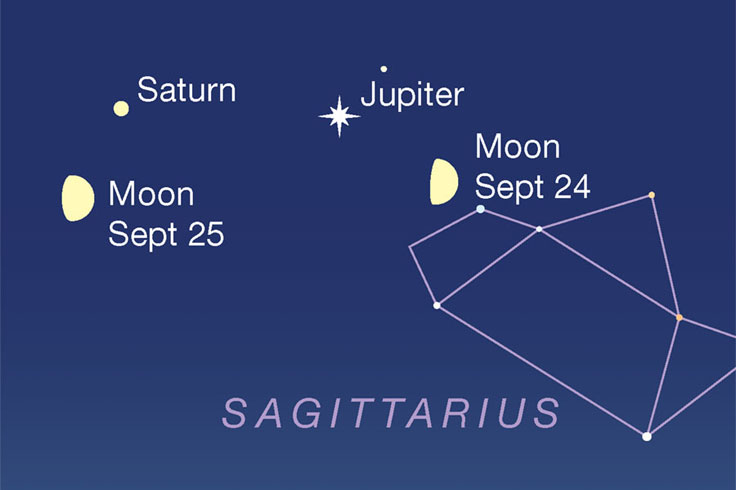
Five Billion Kilometers Through the Solar System
Let’s head out on an adventure: From our favorite south-facing spot tonight, on September 24th, the first thing we’ll see as darkness wraps around us is the waxing gibbous Moon.
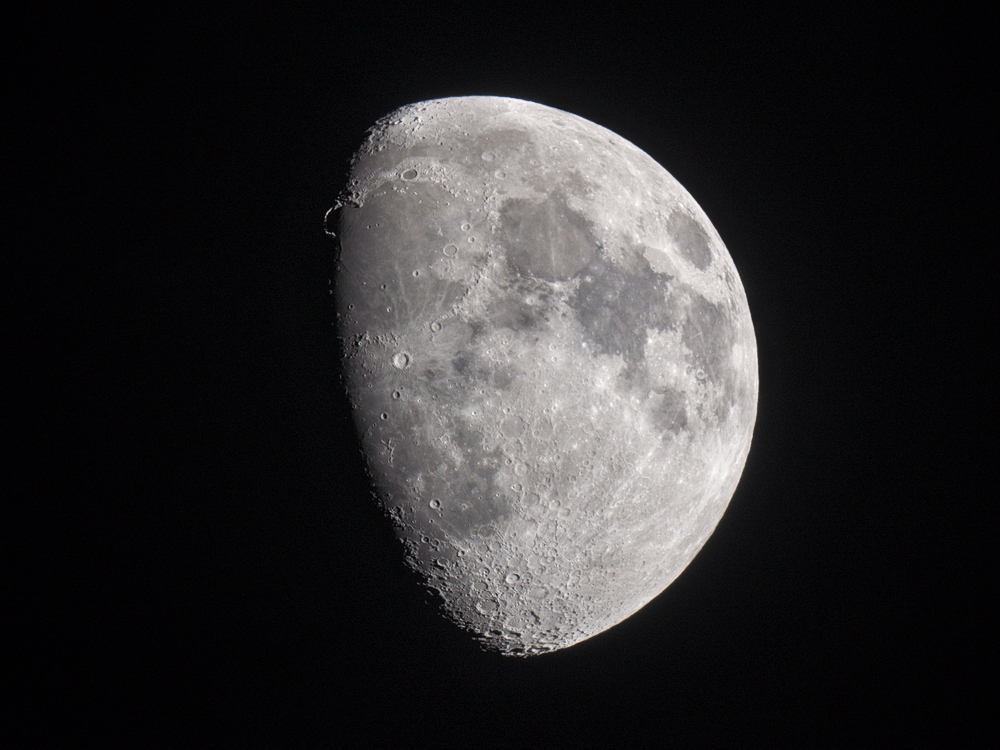
Gary Seronik
Looking at the Moon, we’re not only looking at our closest neighbor, 385,000 km (239,000 miles) away, but we’re also looking at the only object where we can see any detail with the unaided eye, such as impact craters or the dark beds of ancient lava that cooled and hardened on the surface.
The Moon looks like a flat disk from Earth, but there’s a third dimension here, too. The Moon is spherical, so its polar areas are farther from us than its equator. Its diameter is about 3,500 km, which means the poles are 1,750 km farther away from us than the equator. Put another way, the poles as we see them are 0.0058 seconds older than the equator, because light must travel that extra distance.
We’re not held back by the speed of light, though. On the straight lines from our eye into space, we can travel as fast as we want. With just a quick hop to the east of the Moon, the line from our eye stretches beyond the Moon’s orbit, beyond Mars’s, too, and through the asteroid belt.
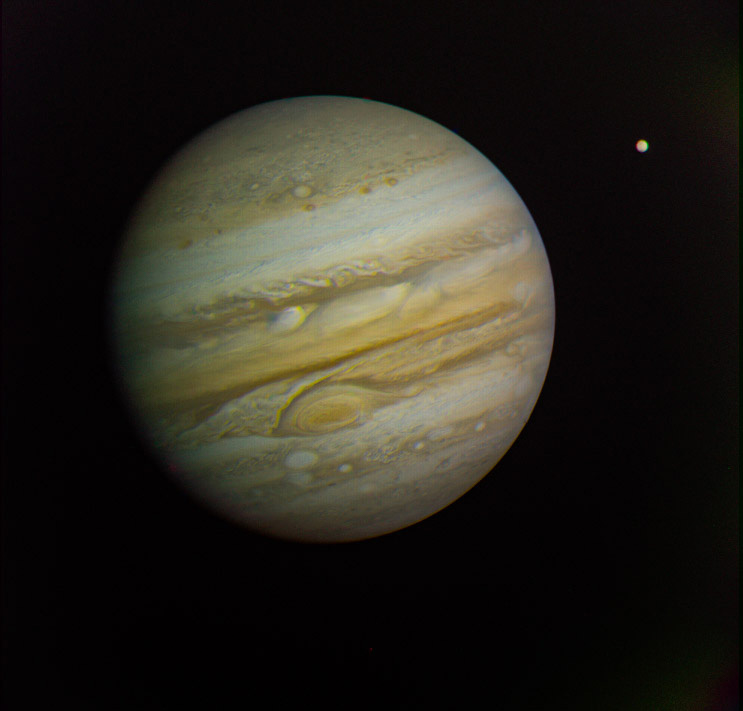
JPL / NASA / Daniel Johnson
The next bright light in the sky is giant Jupiter, currently about 700 million km past the Moon. As we get there, let’s take a minute to imagine its 79 known moons, including four of our solar system’s biggest, circling over the planet’s striped cloudtops and Earth-size storms.
Now, a bit more to the east, the line takes us to ringed Saturn and its 82 known moons. From Earth, Saturn appears next to Jupiter, but it’s about twice the distance to Jupiter: 1.4 billion km from our eyes. The light we see left the planet some 80 minutes ago.
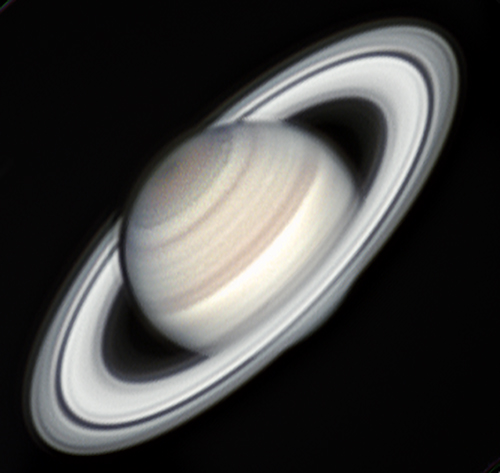
Fernando Menezes / S&T Online Photo Gallery
With Saturn, we’ve reached the farthest thing in our solar system that most people can see without binoculars or a telescope. But between the two planets in our sky, our view can keep going if we have some optical aid. A small telescope will reveal Pluto, 5 billion km from the Sun, 34 times Earth’s distance; to see Pluto’s five moons would take a telescope like the Hubble Space Telescope.
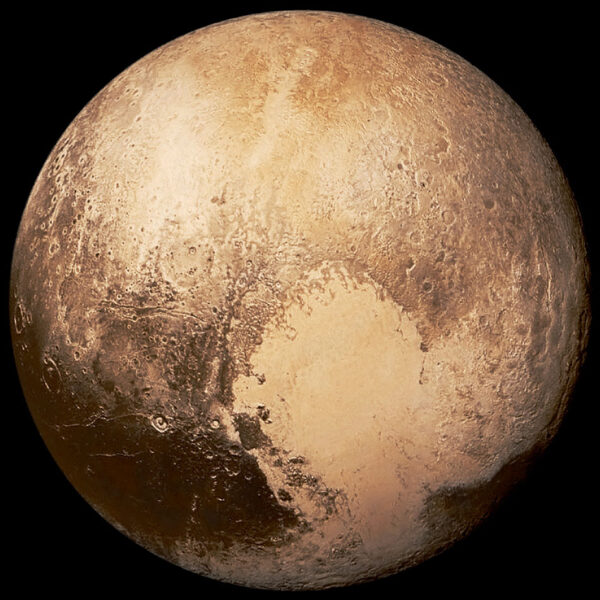
NASA / JHUAPL / SwRI
Farther still, just a little bit to the south of Jupiter, is Arrokoth (2014 MU69), the minor planet that NASA’s New Horizons visited in 2019. The probe took almost four years to travel the 1.6 billion km from Pluto to the small snowman-shaped rock. Now, the spacecraft still speeds away from us — before long, that tiny speck of humanity will leave our solar system, never to return.
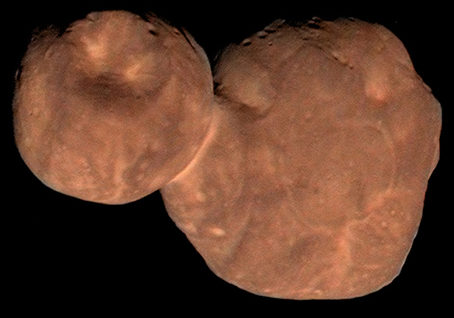
NASA / JHUAPL / SWRI / Roman Tkachenko
To the Stars and Beyond
For the final and longest leg of our journey, look at the star that lies just to the Moon’s southwest tonight. As we stare off into space, there’s a perfectly straight line 228 light-years long that stretches from our eyes through Earth’s atmosphere, across the solar system, through untold emptiness and finally connecting to Nunki, the second-brightest stars in the constellation Sagittarius. It’s a luminous white main-sequence star.
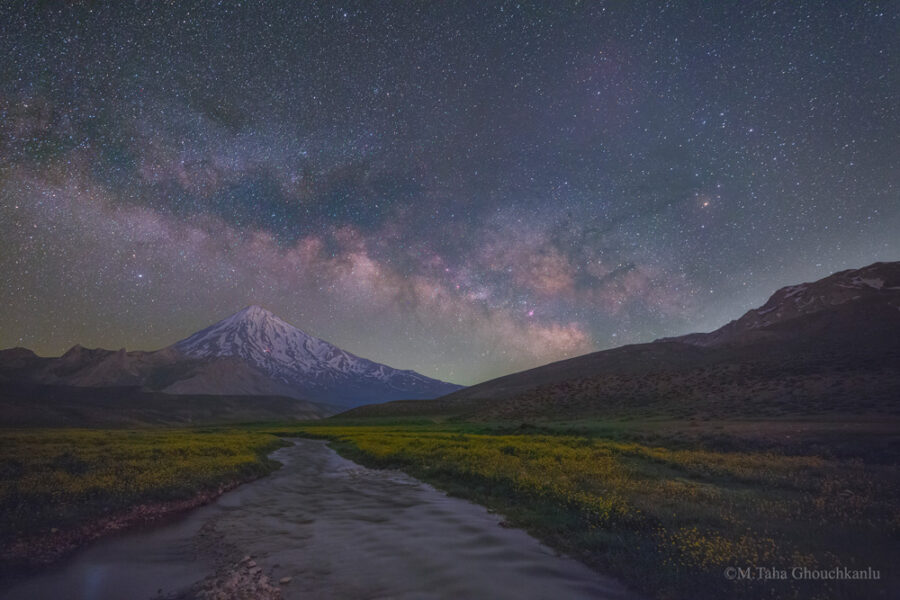
Taha Ghouchkanlu / S&T Online Photo Gallery
Beyond that, the smoky band of the central part of the Milky Way, our galactic home, is many thousands of light-years farther away. Can you imagine what else is out there?
The sky might look flat, but a closer examination reveals its depth: In this small corner of the night, we can hop from Earth to the Moon, past the solar system’s biggest planets, two Kuiper Belt objects, a flying space robot, a distant star, and the galaxy itself — all along a line stretching farther along than we can ever really grasp.
 5
5









Comments
Anthony Barreiro
September 24, 2020 at 5:10 pm
Understanding the universe in three dimensions (four dimensions if we include relativity and the speed of light) is one of the most remarkable human intellectual accomplishment of the past few centuries.
I would add a couple more significant milestones in this part of the sky. The Lagoon nebula (Messier 8), a big cloud of gas and dust glowing with the light of newborn stars, is easily visible to the naked eye in a dark sky from 4000 to 6000 light years away (distance estimates vary, don't trust your GPS to give you an accurate ETA). Baade's window is a narrow tunnel through the obscuring dust lanes of the Milky Way's spiral arms, allowing us to see old stars near the center of galaxy, about 26,000 light years from Earth.
You must be logged in to post a comment.
Scott Levine
September 24, 2020 at 7:48 pm
Those are really great places to steer people toward, too, you're right, but... word limits. 🙂 Maybe for the big-budget sequel! Thanks for reading!
You must be logged in to post a comment.
Anthony Barreiro
September 24, 2020 at 8:39 pm
Thanks Scott. An infinite universe doesn't fit neatly into editorial constraints. There's always one more thing to see ... .
You must be logged in to post a comment.
Scott Levine
September 24, 2020 at 9:34 pm
You're absolutely right, Anthony, and that, right there -- there's always one more thing -- is one of the reasons so many of us look up every night, night after night after night.
You must be logged in to post a comment.
Yaron Sheffer
September 29, 2020 at 3:30 am
Given that Arrokoth is 1.6 billion km beyond Pluto, the "Five billion kilometers through the solar system" section title is selling this fantastic voyage a little short!
I liked the mention of light travel time difference between the moon's equator and poles. Now to boggle our minds even more, think of the perpetual motions of all these bodies is three dimensions. Even the surface of the Earth is constantly carrying the observer toward and away those celestial objects in a never ending 24-hour cycle.
You must be logged in to post a comment.
You must be logged in to post a comment.